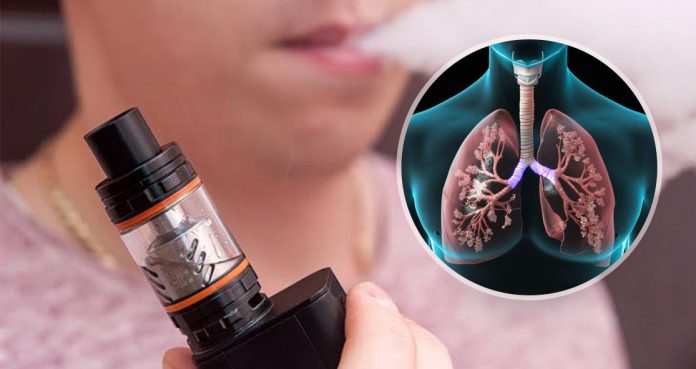In September, a 17-year-old boy from Ontario, Canada, had to be put on life-support after suffering from a serious vaping-related illness. Researchers said that it could be the first reported case of “popcorn lung” disease associated with e-cigarettes.
The boy’s case was published Thursday in the Canadian Medical Association Journal.
He had the same clinical features as other patients had with vaping illness; however, his CT scans showed that he had a different pattern of lung damage.
In more than 2,000 patients with severe lung disease associated with vaping, there was damage in the tiny sacs of their lungs. But in the boy’s case, there were tiny “nodules” in the air sacs (bronchioles), making a “tree-in-bud” pattern.
This type of bronchiole damage is seen in people with acute bronchiolitis, an infection quite similar to the common cold. In this case, researchers diagnosed him with “popcorn lung” disease, which is also known as obliterative bronchiolitis.
The term “popcorn lung” disease was coined almost 20 years ago when doctors found that the workers of a microwave popcorn factory developed this condition. The workers were believed to inhale a buttery flavor called diacetyl in the product.
It has been found that diacetyl has still been used in some flavored e-cigs, although many companies have discontinued its use.
The researchers were not sure whether diacetyl was the main cause in the teen’s case because the e-cigs he vaped had been long discarded.
The doctors found that the boy used to vape heavily every day for nearly five months before he experienced the first symptoms. He said used cotton candy, green apple, and dew mountain cartridge flavors for vaping, which he bought online. He also told the doctors that he regularly used to add THC to his e-cigs.
The CDC has said that more than 86 percent of cases of lung diseases related to vaping reported using THC.
The teen was taken to the hospital when he started having a cough, breathlessness, and fever. He was diagnosed with pneumonia and was given antibiotics. However, his breathing difficulties worsened and his respiratory function quickly deteriorated.
He was transferred to Toronto General Hospital and was enrolled in the lung transplant program. However, he started recovering well with high-dose steroids. Eventually, he was discharged after 47 days of hospitalization but still has chronic lung damage. The article was published in the PEOPLE.






















